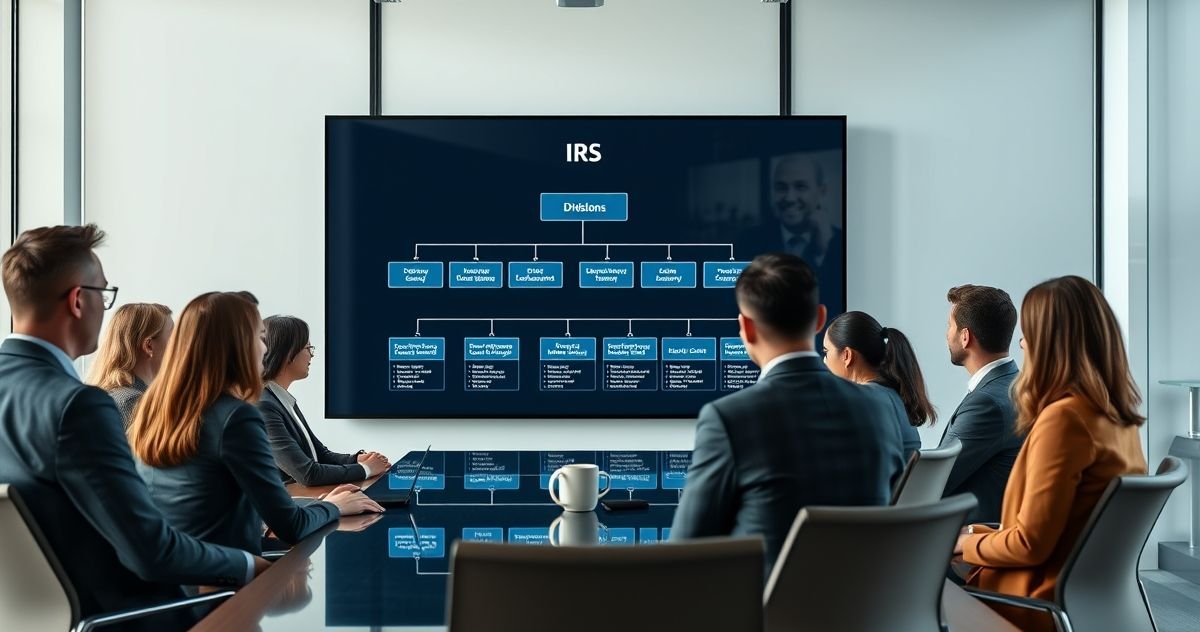Background and History
The Internal Revenue Service (IRS) was established in 1862 during the Civil War to fund federal operations through tax collection. Over time, it has grown into a complex agency responsible for administering the Internal Revenue Code, collecting trillions of dollars in revenue annually, and providing essential taxpayer services. To effectively manage its broad responsibilities, the IRS is organized into several divisions tailored to different taxpayer needs and tax types.
Main Components of the IRS Organizational Structure
The IRS operates under the U.S. Department of the Treasury and is led by the Commissioner of Internal Revenue, who is appointed by the President and confirmed by the Senate. Below the Commissioner, the IRS is structured into several key divisions, each focusing on specific taxpayer groups and regulatory functions:
1. Wage and Investment Division (W&I)
The W&I division handles tax returns filed by individual wage earners and families. This division focuses on processing individual tax returns, managing refunds, and providing direct taxpayer assistance via customer service channels.
2. Small Business/Self-Employed Division (SB/SE)
Responsible for tax administration concerning small businesses, self-employed individuals, and certain excise taxes, this division conducts audits, collections, and outreach tailored to smaller entities and independent workers.
3. Large Business and International Division (LB&I)
LB&I manages compliance for large corporations, partnerships, and international taxpayers. Because large businesses have complex financial structures, this division handles sophisticated tax enforcement and audit activities.
4. Tax Exempt and Government Entities Division (TE/GE)
TE/GE oversees tax compliance for nonprofit organizations, charitable entities, pension plans, and government bodies. It ensures that these organizations meet their tax obligations and adhere to applicable exemptions.
5. Criminal Investigation Division (CI)
The CI division investigates tax evasion, fraud, and related financial crimes. Agents have law enforcement authority to pursue criminal tax violations.
6. Appeals Office
This independent office reviews and resolves tax disputes without requiring court proceedings, providing taxpayers a chance to settle disagreements informally.
7. Other Supporting Offices
These include the Chief Counsel, which provides legal guidance; the Office of Equity, Diversity & Inclusion; and the Small Business Advocate, among others.
How the IRS Structure Affects Taxpayers
Different taxpayers interact with distinct IRS divisions based on their tax profile:
- Individuals and families: Generally work with the Wage and Investment Division.
- Small businesses and freelancers: Managed by the Small Business/Self-Employed Division.
- Large corporations and international entities: Overseen by the Large Business and International Division.
- Nonprofits and government entities: Correspond with the Tax Exempt and Government Entities Division.
- Suspected tax criminals: Investigated by the Criminal Investigation Division.
Knowing which division handles your tax matters can streamline communication and ensure you receive appropriate guidance.
Practical Tips for Navigating the IRS
- Identify your IRS contact: When dealing with the IRS, clarify which division or office is managing your case to understand their role and processes.
- Use IRS online resources: The IRS website provides division-specific contact information and helpful tools to guide taxpayers.
- Appeals process: If you disagree with an IRS decision, consider using the Appeals Office for an independent review before pursuing legal action.
Key IRS Divisions at a Glance
| Division | Focus | Taxpayer Groups |
|---|---|---|
| Wage and Investment (W&I) | Individual returns and taxpayer services | Individuals, families |
| Small Business/Self-Employed (SB/SE) | Small businesses, self-employed, excise taxes | Small businesses, freelancers |
| Large Business and International (LB&I) | Large corporations and international taxpayers | Corporations, partnerships |
| Tax Exempt and Government Entities (TE/GE) | Tax-exempt organizations, government entities | Charities, pension plans |
| Criminal Investigation (CI) | Tax fraud and financial crimes | Taxpayers under criminal investigation |
| Appeals Office | Independent resolution of tax disputes | All taxpayers |
Common Misconceptions About the IRS Structure
-
Misconception: The IRS operates as a single monolithic office handling all tax matters.
Reality: The IRS consists of specialized divisions focusing on different taxpayer types and tax issues to improve efficiency.
-
Misconception: Taxpayers interact directly with the IRS Commissioner.
Reality: Most interactions occur at the division level; the Commissioner oversees the agency but does not handle individual cases.
Frequently Asked Questions
Q: Can I contact the IRS division responsible for my type of tax?
A: Yes, the IRS website lists division-specific contact information based on taxpayer type and inquiry.
Q: Does the IRS structure influence how audits are conducted?
A: Yes, audits are managed by different divisions depending on taxpayer classification and audit complexity.
Q: What does an audit by the Criminal Investigation Division involve?
A: The CI division investigates suspected criminal violations, which are more serious than standard audits and may involve law enforcement action.
Sources and Further Reading
- IRS – About IRS
- IRS Organizational Structure
- Investopedia – Internal Revenue Service (IRS)
- U.S. Department of the Treasury – IRS Overview
For more detailed guidance on IRS procedures and taxpayer rights, visit the official IRS website.

